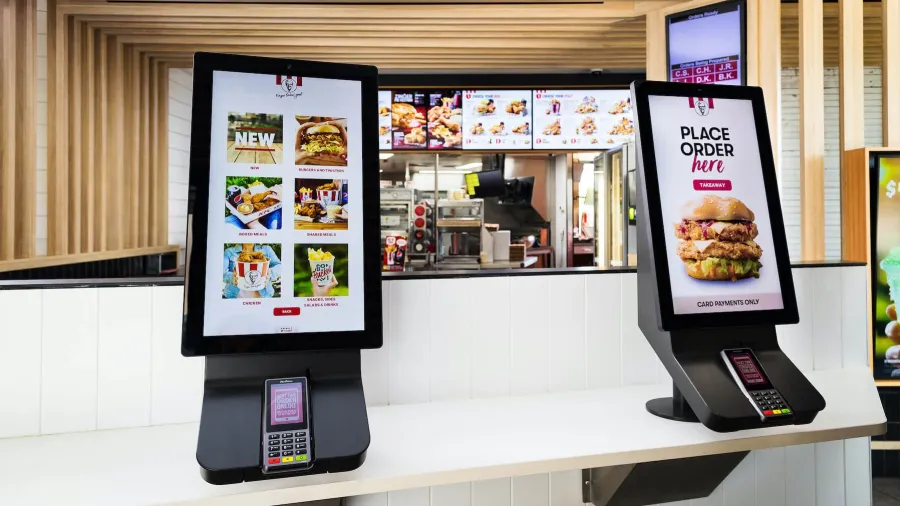
How self-service kiosks are transforming the QSR industry
From helping restaurants bust queues to increasing kitchen efficiency and improving order accuracy, self-service kiosks are fast getting a bigger share of the QSR pie.
Fueled by widespread adoption by restaurants following the COVID-19 pandemic, the global kiosk market is expected to reach USD 2.4 billion in 2027, an important breakthrough after years of moderate takeup.
Whilst other players in the retail and hospitality industry were quick to adopt the latest tech trends pre-pandemic, most QSRs were still heavily reliant on in-store traffic. In 2020 however, the impacts of COVID-19 on the market put a rocket under innovation, digitalisation, and contactless services.
QSR brands in Australia saw drive-thrus, deliveries, and online orders go through the roof over the past year as most customers shifted to offsite dining. Today, restaurants are beginning to reopen and welcome diners back in-store as restrictions begin to relax. Only this time, customers have become extremely cautious about face-to-face interactions.
According to the Reserve Bank of Australia (RBA), 4 in 5 consumers used tap and go payments every week in the last two years. With self-service kiosks in place at restaurants, consumers need not go through the hassle of queueing and transacting at the counter. With only a few taps, they can get their orders and head off, saved from worrying about queues or getting into contact with anyone.
Why self-service kiosks?
Global tech company Fingermark™ reveals that in the US, incorrect orders impact a restaurant’s revenue significantly, wasting an average of five to six orders per day or US$ 17,520 a year*. Self-service kiosks can bring this cost down dramatically by creating a direct line between the kitchen and customer, reducing inaccurate or mixed-up orders and redeploying staff to more meaningful work. Queues, on the other hand, move faster with the presence of a self-service kiosk, as customers strapped for time typically order via a kiosk.
Customers not only enjoy the engaging interactive experience, they also get a buzz out of the control that kiosks offer. When using kiosks, customers have full control over their orders. This creates greater customer satisfaction, which often leads to increased check sizes.
“Kiosks give customers choice or the power to modify and customise their orders. With smart content management, restaurants can also provide suggestive selling, based on time of day or what previous customers have ordered. It’s a highly beneficial add-on to every restaurant establishment,” says Luke Irving, founder and CEO of Fingermark™.
Kiosks that work
In order for restaurants to maximise the benefits from self-service kiosks, strategically positioning them in-store is crucial. Placing kiosks within direct line of sight of the entrance means customers can see that the kiosks are available and that they can make a choice to use or join the queue at the counter. Multiple kiosks are also recommended, leading customers to think that it is a major option for them and one that they will likely go for.
Kiosks that get the best results offer an integrated solution between software and hardware, so QSR operators can get real-time updates and synchronisation. Ideally, kiosks should also be built to withstand environmental conditions and meet the demands of specific markets.
Fingermark™ offers several mounting options that can easily retrofit most store layouts. Moreover, kiosks can seamlessly integrate with existing QSR tech providers. Fingermark™ leverages established relationships between the QSR and their payment provider, working together to integrate the required POS and payment systems and testing the system before launching in store.
Self-service kiosks may well be the “counters of the future.” For now, they serve as an important complement to customer-centric restaurants, improving speed, efficiency, and accuracy in an increasingly digital and interactive QSR landscape.


























